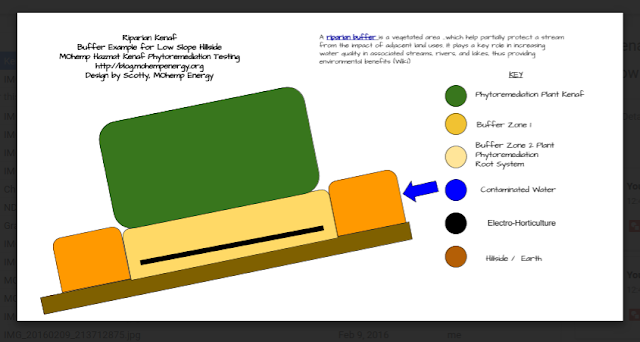In pt1 MOhemp Energy financial update mentioned: Green Remediation, Lignin Removal, and the affordable
Fiber Processing One-Pass Farm Machine.
Part 2:
MOhemp Hazmat update:
- 5 stage Organic Treatment Train and process not only addresses the opportunities and threats. It speeds up the phytoextraction process of Heavy Metals Toxic Removal. Water containment and control will utilize Riparian Buffer -complimented with Organic Micro Fungi Stimulation and Habitat Creation. The Electro-Horticulture "Plant and Heavy Metal Boost" system that is Solar Powered for Off-Grid Energy. Exploring Chelating Agents, Citric Acids, Organic Tea Root Stimulation, combined with: No-Till Dust Control Planting System. As well as Robotic seed planting and harvesting systems! Phytoremediation by Phytoextraction geared towards Biomass Energy productions.
The 5 Stage Treatmennt Train and Process will be presented to the state AG, FUSRAP, MO DNR, EPA, and local community members.
- Heavy Metal Soil and Material Testing Lab and Personnel will perform on-site testing.
MOhemp Energy update:
- With little to no advertising outside my connections and this Hemp Energy Blog. I have been fielding at least one inquiry per week (from locations all over the World- mainly USA) who are interested in the one pass hemp harvesting machine. As well as my continued exploration into the end uses of Lignin. I happily report that one part of the inventions has been suggested by a recent company as it relates to end fiber "softness" being a major factor! Part of this process involves having test plants. 4 of the 6 are going strong (I killed 1 and 1 didn't sprout)
 (Kenaf plants are now 8in tall, developed the 2nd set of leaves).
(Kenaf plants are now 8in tall, developed the 2nd set of leaves).
- A local Tool and Die company has contacted me about building prototypes and has mentioned they have performed and do similar business activities. So I'm excited on this front of having professional equipment builders and putting more St Louis people to work while we build the inventions!

- Employing Military Veterans.

- Three inquires into Hemp Home Building Projects 2016.
I am extremely happy with the direction that MOhemp Energy and MOhemp Hazmat company endeavors are leading.
MOhemp Energy sends out this invitation to the World, to join in these much needed endeavors. We can make some money, help people and the planet at the same time!
The MOhemp Energy startup is looking all that more appealing when the current Federal and State of Missouri Legislation and active bills that relate to Medical Cannabis, Industrial Hemp, Cannabis cures Cancer, PTSD treatment with Cannabis (Facebook http://buff.ly/1oHFsNk hear a Missouri USA Veteran tell how Cannabis helped his PTSD).
In closing I believe MOhemp has a very bright future.
If you would like to join in this endeavor send email, call, or use the contact form and I will be in touch! Scotty
























